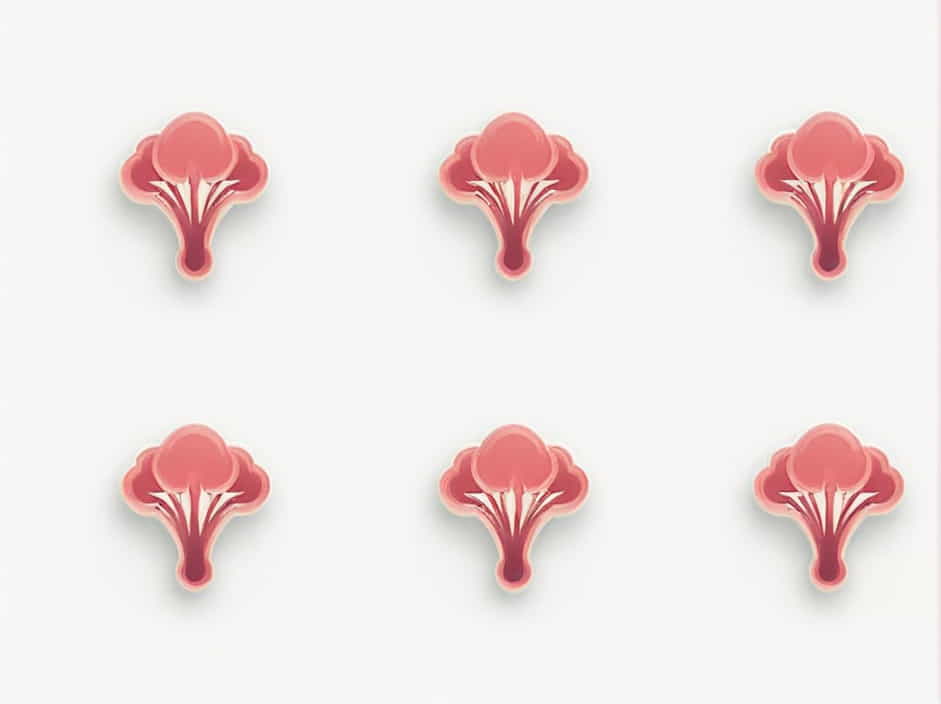Flowers are the reproductive structures of angiosperms (flowering plants). They consist of four main parts: calyx, corolla, androecium, and gynoecium. Each part has a specific function that contributes to the reproductive success of the plant.
By understanding these floral structures, we can better appreciate how flowers develop, attract pollinators, and produce seeds. Let’s explore each component in detail.
1. The Four Main Parts of a Flower
A complete flower is composed of four primary whorls (circular arrangements of structures):
✔ Calyx – The outermost whorl, consisting of sepals.
✔ Corolla – The second whorl, made up of petals.
✔ Androecium – The male reproductive part, containing stamens.
✔ Gynoecium – The female reproductive part, containing carpels.
Each of these parts plays a crucial role in protecting the flower, attracting pollinators, and ensuring reproduction.
2. Calyx: The Protective Outer Layer
What is the Calyx?
The calyx is the outermost whorl of the flower, composed of sepals. Sepals are green, leaf-like structures that protect the flower bud before it blooms.
Functions of the Calyx
✔ Protection: Shields the developing flower from damage and harsh environmental conditions.
✔ Support: Helps hold the petals in place once the flower blooms.
✔ Photosynthesis: In some plants, green sepals perform photosynthesis.
Types of Calyx
✔ Gamosepalous: Sepals are fused together (e.g., Hibiscus).
✔ Polysepalous: Sepals are free and separate (e.g., Rose).
The calyx is essential in safeguarding the flower during its early stages.
3. Corolla: The Attractive Petal Layer
What is the Corolla?
The corolla is the second whorl of the flower, made up of petals. Petals are usually brightly colored and fragrant to attract pollinators like bees, butterflies, and birds.
Functions of the Corolla
✔ Attraction: Draws pollinators with vibrant colors and scents.
✔ Guidance: Provides markings or patterns to guide pollinators toward nectar and pollen.
✔ Protection: Shields the reproductive organs from external factors.
Types of Corolla
✔ Polypetalous: Petals are free and not fused (e.g., Rose).
✔ Gamopetalous: Petals are fused together (e.g., Morning Glory).
The corolla plays a major role in the pollination process by ensuring pollinators visit the flower.
4. Androecium: The Male Reproductive Organ
What is the Androecium?
The androecium is the male reproductive whorl of the flower. It consists of stamens, each of which has two parts:
✔ Anther: The upper part where pollen is produced.
✔ Filament: A stalk that holds up the anther.
Functions of the Androecium
✔ Pollen Production: Anthers generate pollen, which contains male gametes.
✔ Pollen Dispersal: Helps transfer pollen to the female reproductive organ.
Types of Stamens
✔ Monadelphous: Stamens are fused into a single unit (e.g., China Rose).
✔ Diadelphous: Stamens are grouped into two sets (e.g., Pea).
✔ Polyadelphous: Stamens are grouped into multiple sets (e.g., Citrus).
The androecium ensures the production and dispersal of pollen for fertilization.
5. Gynoecium: The Female Reproductive Organ
What is the Gynoecium?
The gynoecium is the female reproductive whorl of the flower, consisting of one or more carpels. Each carpel has three parts:
✔ Stigma: The top part where pollen lands.
✔ Style: A tube that connects the stigma to the ovary.
✔ Ovary: The base that contains ovules, which develop into seeds after fertilization.
Functions of the Gynoecium
✔ Pollen Reception: Stigma captures pollen during pollination.
✔ Fertilization: Ovules inside the ovary develop into seeds after fertilization.
✔ Seed Production: The ovary matures into a fruit containing seeds.
Types of Gynoecium
✔ Monocarpous: A single carpel (e.g., Pea).
✔ Apocarpous: Multiple free carpels (e.g., Lotus).
✔ Syncarpous: Multiple fused carpels (e.g., Tomato).
The gynoecium is essential for seed and fruit formation, ensuring plant reproduction.
6. The Importance of These Floral Structures
1. Role in Pollination
✔ The corolla attracts pollinators, while the androecium provides pollen.
✔ The stigma of the gynoecium captures pollen for fertilization.
2. Role in Fertilization
✔ The androecium and gynoecium work together for fertilization, leading to seed formation.
3. Role in Seed and Fruit Development
✔ The gynoecium’s ovary develops into fruit, protecting seeds until germination.
7. Differences Between Calyx, Corolla, Androecium, and Gynoecium
| Floral Part | Function | Components | Role in Reproduction |
|---|---|---|---|
| Calyx | Protects flower bud | Sepals | No direct role |
| Corolla | Attracts pollinators | Petals | Indirect role |
| Androecium | Produces pollen | Stamens (anther + filament) | Male reproductive part |
| Gynoecium | Produces ovules and seeds | Carpels (stigma + style + ovary) | Female reproductive part |
Each part has a specific function that contributes to the overall success of the flower’s reproductive cycle.
The calyx, corolla, androecium, and gynoecium are the four fundamental parts of a flower. The calyx protects the bud, the corolla attracts pollinators, the androecium produces pollen, and the gynoecium forms seeds and fruit.
Understanding these structures helps us appreciate how flowers reproduce, attract pollinators, and contribute to the ecosystem. By preserving flowers and their habitats, we support biodiversity and ensure the survival of various plant species.
